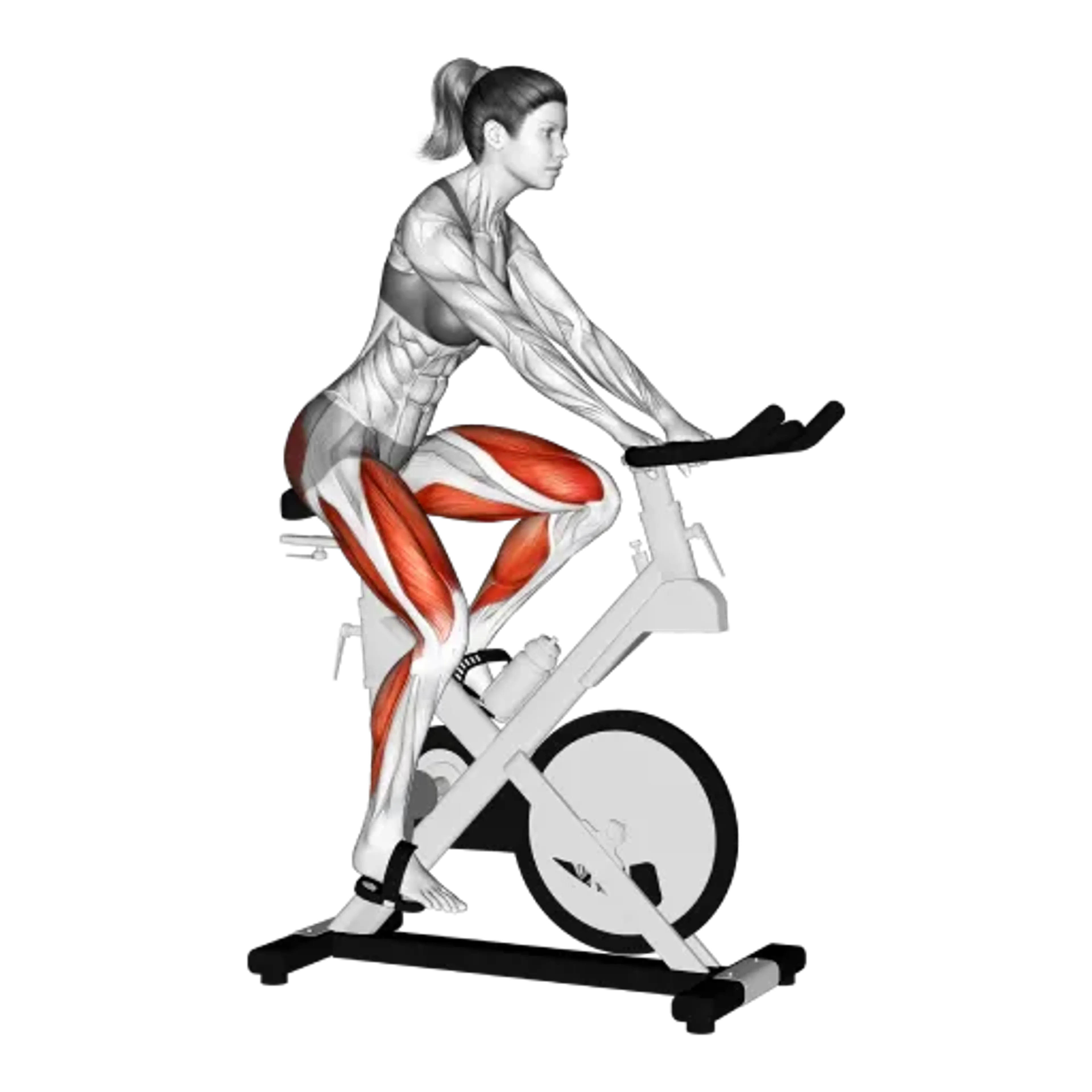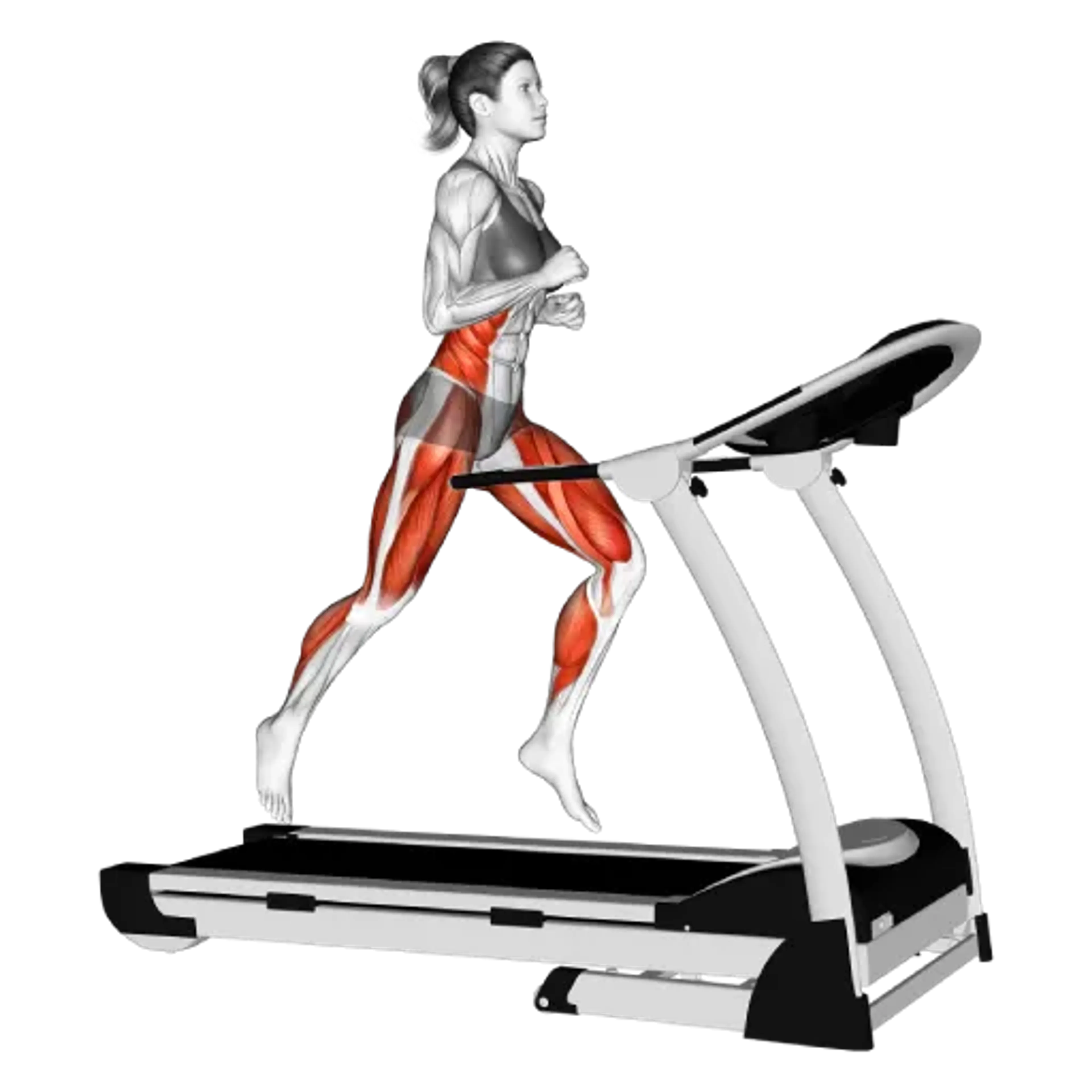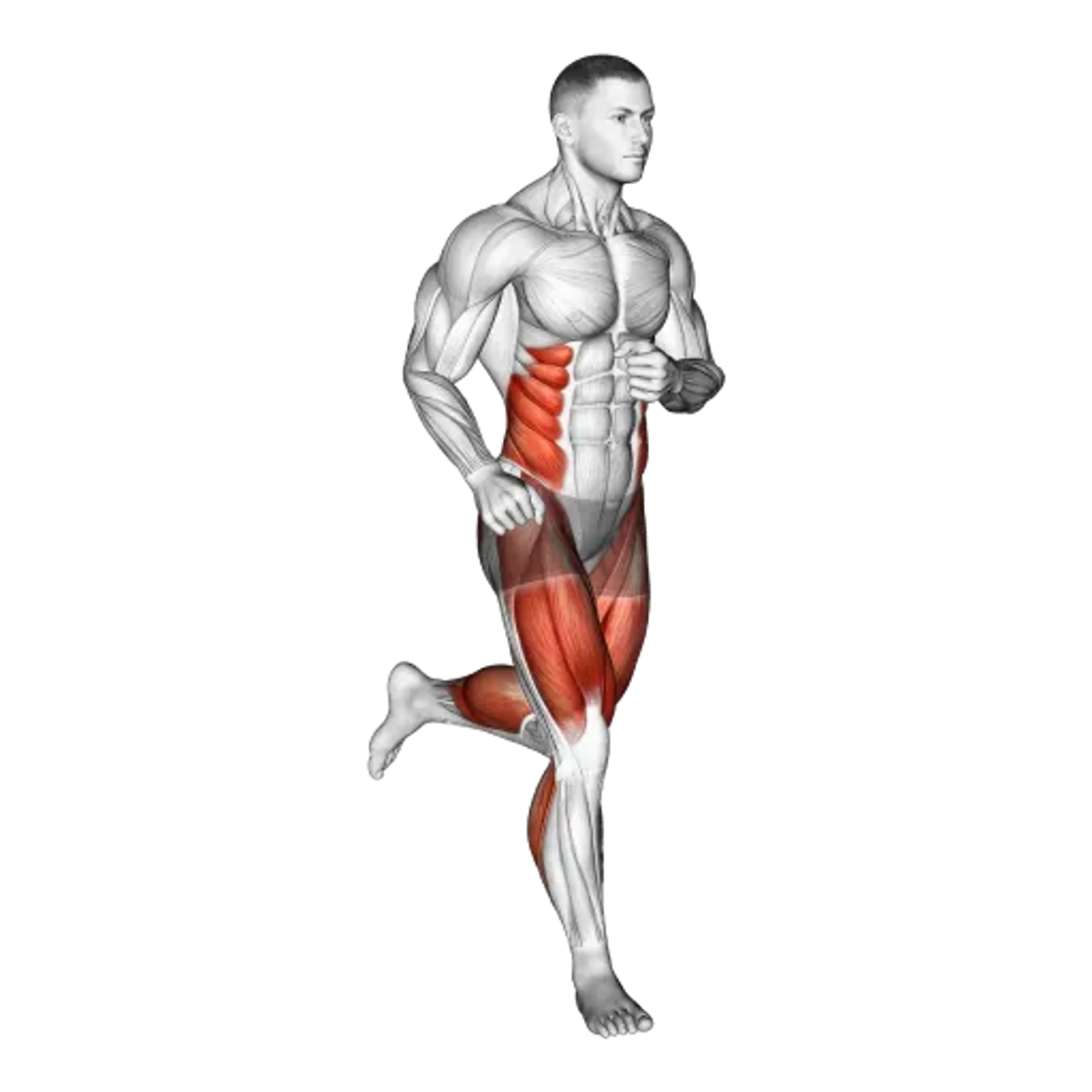Upright Bike

Overview
- Primary Focus:
- Cardio.
- Equipment:
- Machine.
- Difficulty:
- Beginner.
General Information
Upright Bike is a cardio exercise that improves cardiovascular endurance and overall fitness. It is considered a beginner-level activity, depending on intensity and personal capabilities. It’s a low-impact option that is easy on the joints while still providing a good workout.
Unlike recumbent bikes, the upright bike more closely simulates outdoor cycling by positioning the rider vertically. This setup also lightly engages your core and upper body for balance and posture, making it a more full-body workout than it may seem at first.
Upright bikes are great for steady-state cardio or high-intensity interval training (HIIT). They’re suitable for people of all fitness levels and can be used to burn calories, improve heart health, or support recovery from injury.
Muscles Worked
- Rectus Femoris
- High
- Vastus Lateralis
- High
- Vastus Medialis
- High
- Biceps Femoris
- Medium
- Gastrocnemius (Lateral Head)
- Medium
- Gastrocnemius (Medial Head)
- Medium
- Gluteus Maximus
- Medium
- Semimembranosus
- Medium
- Semitendinosus
- Medium
- Soleus
- Medium
- Gluteus Medius
- Low
- Erector Spinae
- Minimal
Instructions
- Adjust the seat height so your leg is nearly straight (with a slight bend) at the bottom of the pedal stroke.
- Sit on the seat with a neutral spine and both feet placed securely on the pedals.
- Grip the handlebars lightly, keeping your shoulders relaxed and elbows slightly bent.
- Begin pedaling at a light resistance to warm up your muscles.
- Maintain a smooth, circular pedaling motion. Increase resistance or speed based on your workout goals.
- Cool down with 2–5 minutes of light pedaling before stopping.
Common Mistakes
Injuries
Upright Bike is a low to medium risk exercise. While generally safe, poor form or improper setup can lead to discomfort or minor injury.
Common issues include knee pain from incorrect seat height, or lower back strain from hunching over the handlebars. Overuse injuries may develop if training intensity increases too quickly without rest.
To prevent these issues, ensure proper bike setup before each session. Pay attention to posture—keep your back straight, avoid leaning too far forward, and stretch regularly to maintain flexibility in the hips and hamstrings.
Alternative Exercises

Frequently Asked Questions
- Q: Can I use the upright bike every day?
Yes, it’s safe for daily use, but incorporate rest or low-intensity days to avoid overuse injuries.
- Q: Is upright biking good for weight loss?
Yes, it burns calories efficiently and is effective for fat loss when combined with proper diet.
- Q: How long should a typical session last?
Most people benefit from 20-45 minutes per session, depending on fitness level and intensity.
Overview
- Primary Focus:
- Cardio.
- Equipment:
- Machine.
- Difficulty:
- Beginner.



